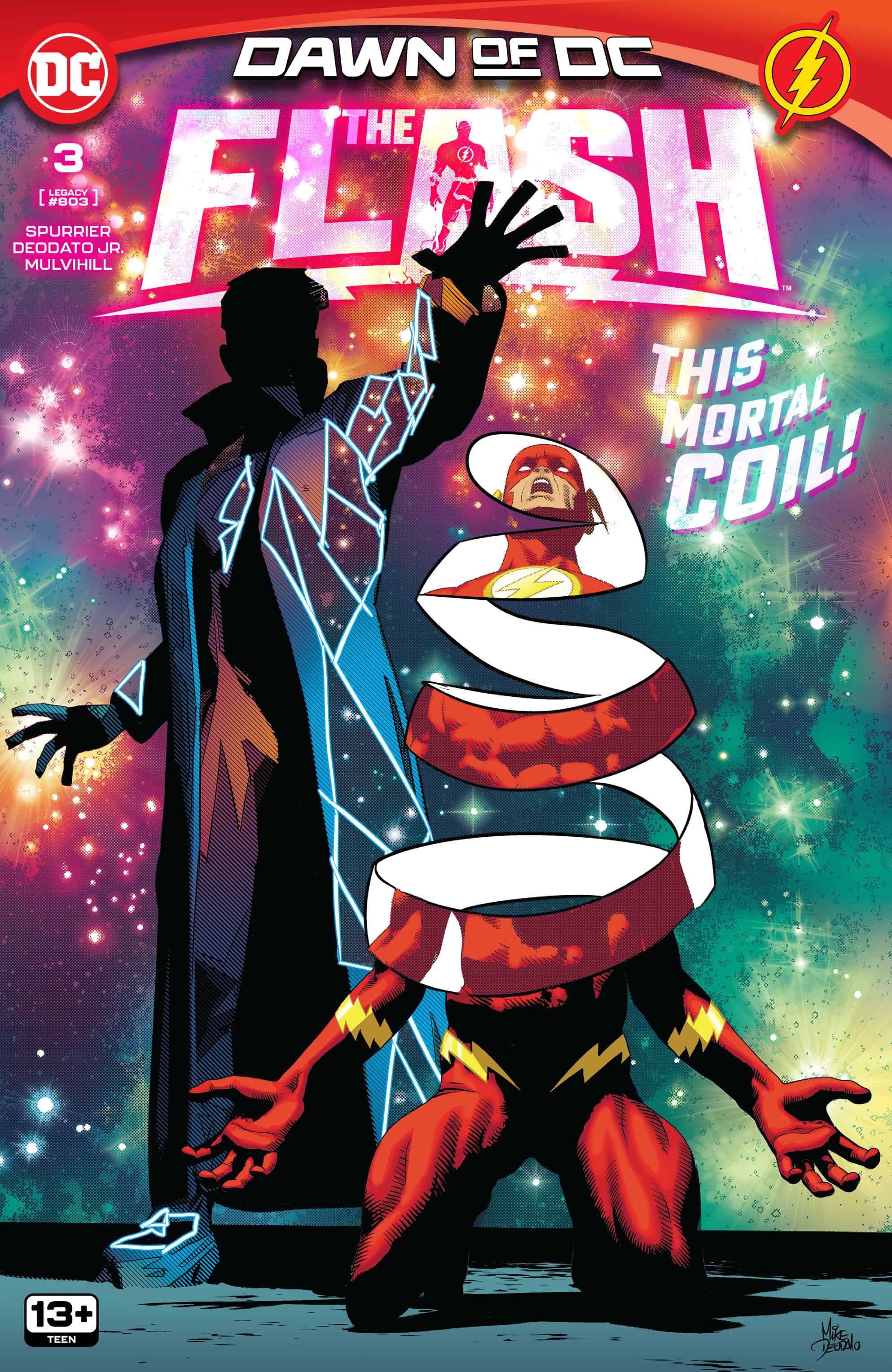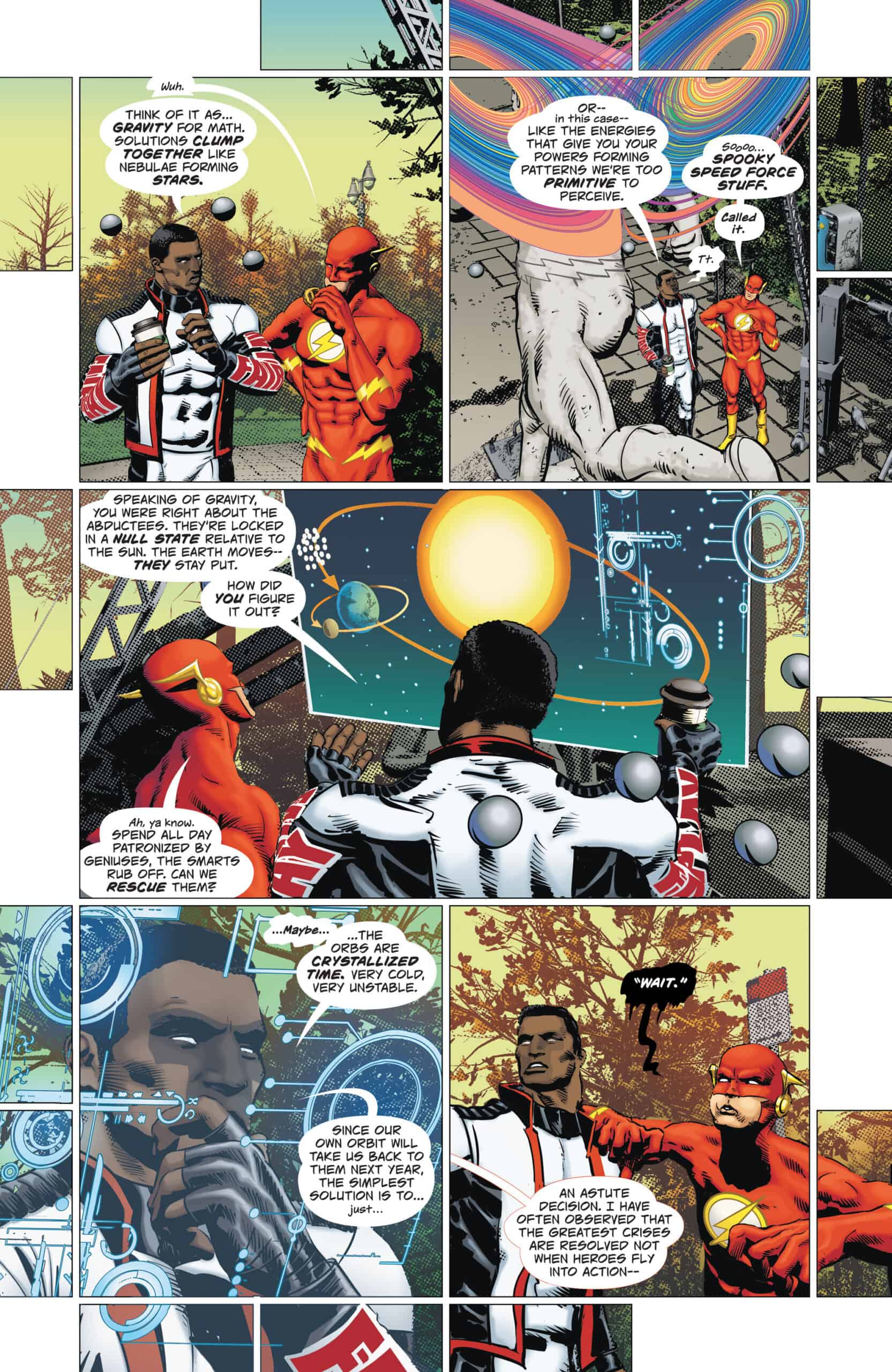The Flash #3

Recap
WALLY WEST VS. THE FOLDING MAN—LIKE YOU’VE NEVER SEEN HIM BEFORE! After the arrival of the Stillness last issue, the alien speedsters begin traveling around the world, with Max Mercury watching their every move. Meanwhile, Wally encounters another former foe who’s gotten a major upgrade—the Folding Man—while entering a new location beyond time called the Gallery…what hidden truths does this place hold for the Flash?
Review
The Flash #3 picks up with Wally’s investigation into his seemingly new abilities to transcend reality. While investigating things with Mister Terrific, Wally begins to look for an alternative means to find answers, creating an opportunity for Max Mercury to re-enter the narrative after not being seen outside of the opening stinger for the first issue. This creates a team/mentor dynamic throughout the issue that helps increase the stakes beyond the already compelling mystery.

With the first two issues, writer Si Spurrier made it known why he is the perfect writer for this series. Now, with The Flash #3, those excellent ideas and concepts get to be fleshed out even more, highlighting the creativity and new direction. Spurrier writes Wally the same as he’s always been, yet injects the world with new life by asking the simple question, what are the side effects of The Flash’s use of the speed force? This gets branched off in such great ways, slowly enveloping the entire Flash family, some of which show up here. The only odd bit of storytelling here is how Wally decides to withhold information from Mister Terrific in order to start working with Max Mercury. There doesn’t seem to be a very legitimate reason to push Mister Terrific to the side, other than to highlight the involvement of other characters. This just came off a bit odd; however, Spurrier is the kind of writer to bring this back up later for another story beat.

Mike Deodato Jr. has truly redefined the way art can look in a Flash book, creating a panel orientation that highlights the speed at which Wally sees the world and interacts with it. In The Flash #3, this concept is extended to encapsulate the new dimensions that Wally is able to travel to. This shows a true synergy between writer and artist, highlighting the ways that this narrative has been planned out well in advance. Trish Mulvihill’s colors build on this as well, giving a very synergetic feeling between the colors and pencils. There is so much nuance within the ways that the colors shift throughout the inter-dimensional travel that it would be hard to imagine how this book would look uncolored. Together, Deodato and Mulvihill deliver a tour de force in art.

By far, the best part about The Flash #3 and by extension, the rest of the series so far, is the lettering from Hassan Otsmane-Elhaou. This book has an outstanding amount of unique style purely because of how differently it is lettered when compared to the rest of mainstream comics. Otsmane-Elhaou is not afraid to mess with lettering conventions, turning speech bubbles on their sides and matching speech inflections with equally unique text boxes. He goes as far as matching the Folding Man’s power effect on characters with the speech bubbles to reinforce the way that these characters are being contorted. Even with all of that, the best use of this unique lettering is late in the issue when Wally decides that he is disinterested in what the Folding Man has to say. This leads to a small, but profound moment, where the lines dividing the panels go over the speech bubble, leaving it readable but showing how Wally feels about what is being said. This small moment is super indicative of what Otsmane-Elhaou brings to this series.
Final Thoughts
The Flash #3 is an excellent look into the new mythology that these creators have set up. The star of the show is Hassan Otsmane-Elhaou who redefines how books can be lettered.
The Flash #3: Twisting and Turning
- Writing - 9/109/10
- Storyline - 9/109/10
- Art - 9.5/109.5/10
- Color - 9.5/109.5/10
- Cover Art - 9/109/10





